I gently set my new skin-on-frame sea kayak into a draining tidal slough and then shoehorned into the tight cockpit. As I readied myself, the outgoing current tried to pull me loose from the shore. I set my paddle to lock me into place while I secured the neoprene spray skirt and pulled on gloves. At the mouth of the slough and all along the shore, four to six foot waves crashed. The water was most dynamic where the current met the waves. I set my eyes on this zone, studied it for a minute, took a breath and shoved off. How the new-to-me kayak would handle big waves was a mystery and one I was anxious to solve.
On most days, one can look out from a perch above any Alaskan harbor and observe a variety of watercraft. By many people’s estimation, a skiff is the most utilitarian boat for exploring the bays, sounds, and fjords of Alaska. A skiff, with its complimentary outboard motor, is a fishing, hunting, and sightseeing vessel, distinctly capable of coming ashore. The skiff, however, is a latecomer. For millennia, another vessel reigned supreme in Alaska and throughout the circumpolar north—the skin-on-frame sea kayak.
Traditional kayaks are elegant watercraft, made from raw, local materials—driftwood, bone, animal sinew, and hide—and are the product of hundreds of generations of refinement and perfection. Each region throughout the Arctic had specific and exacting designs. Kayaks are hunting and fishing vessels, which, in the care of a skilled practitioner, are one of the most adept watercrafts the world has known. Kayaks are one of the few boats that can be capsized and re-righted.
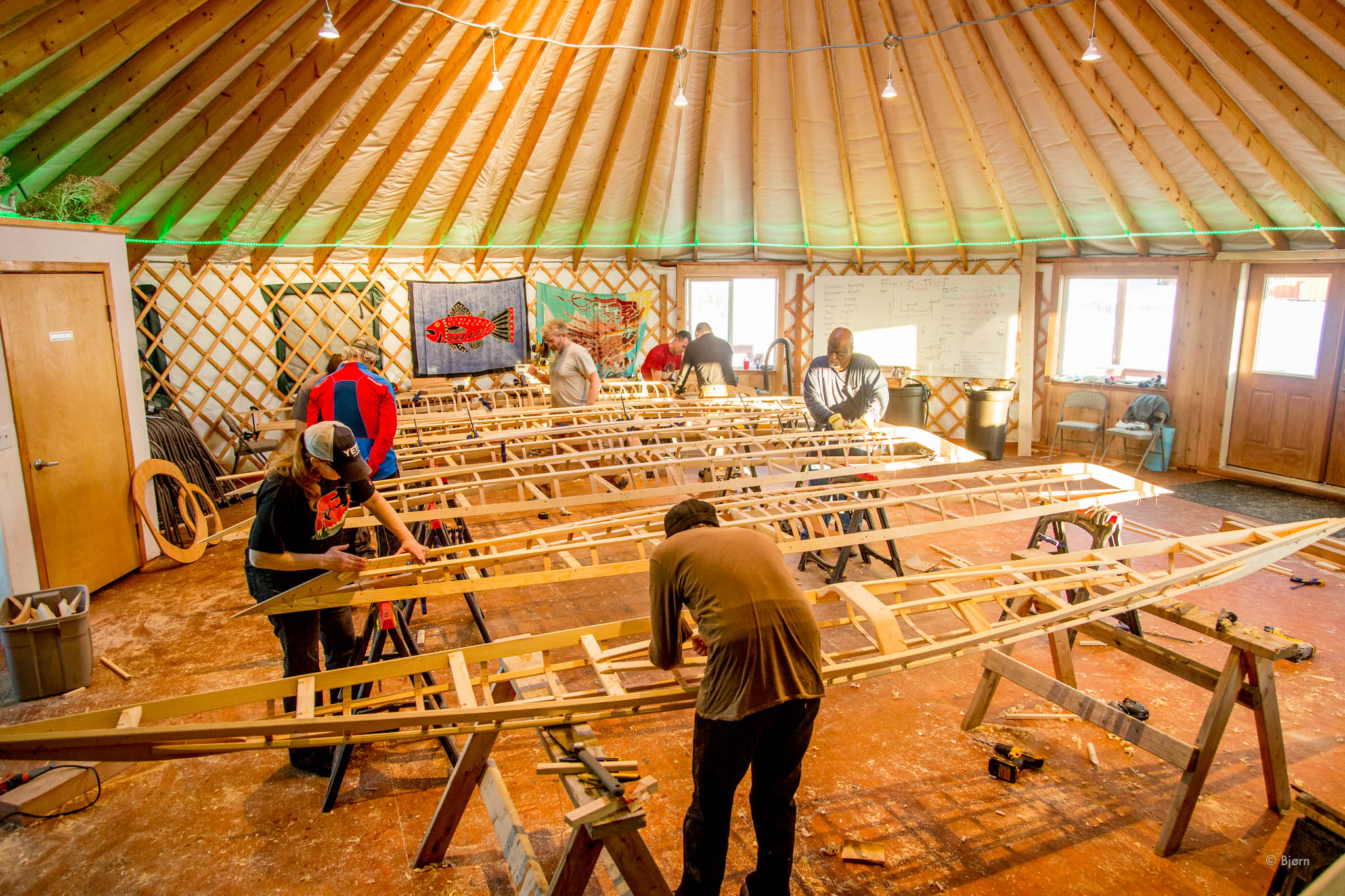
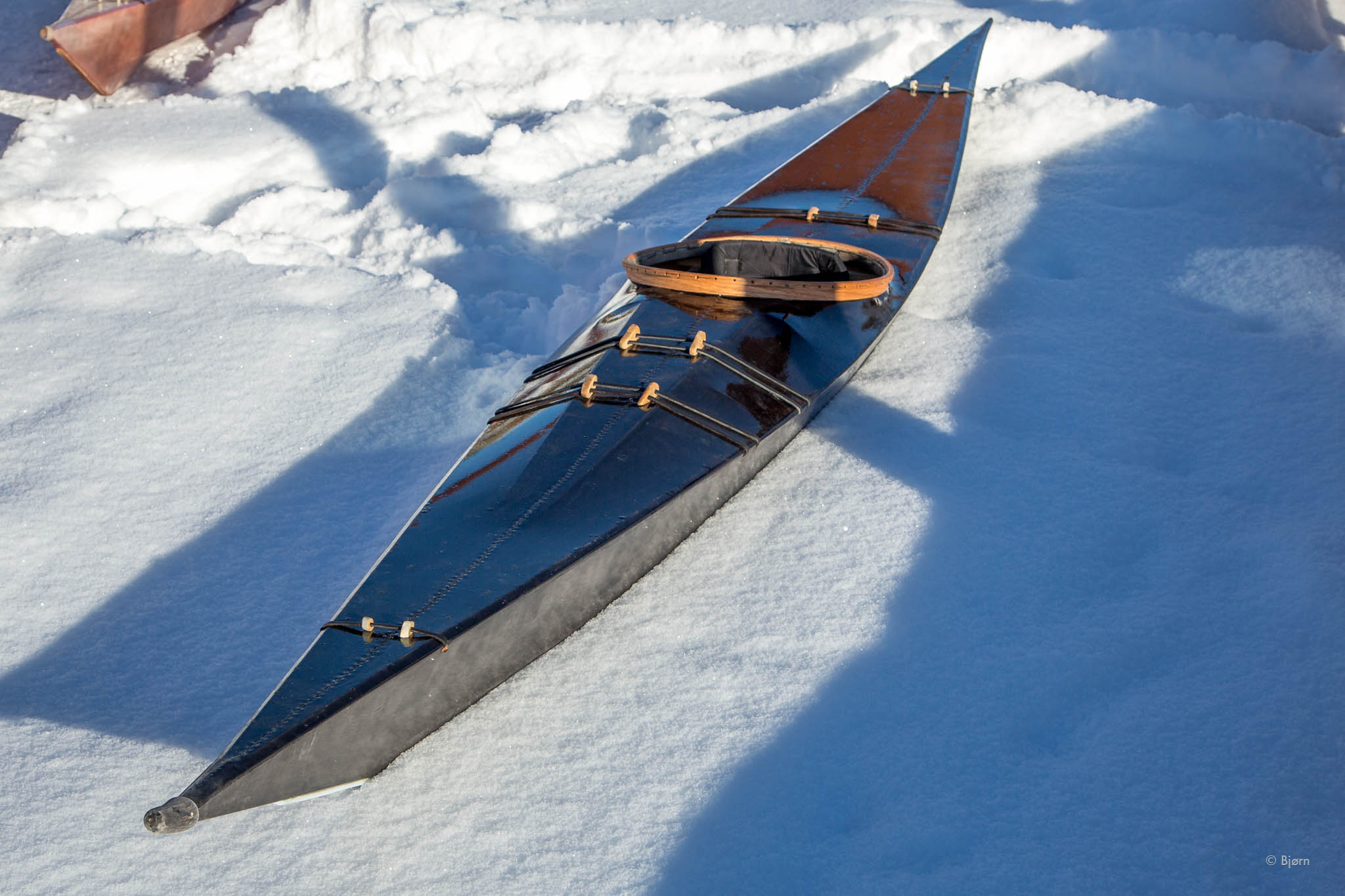
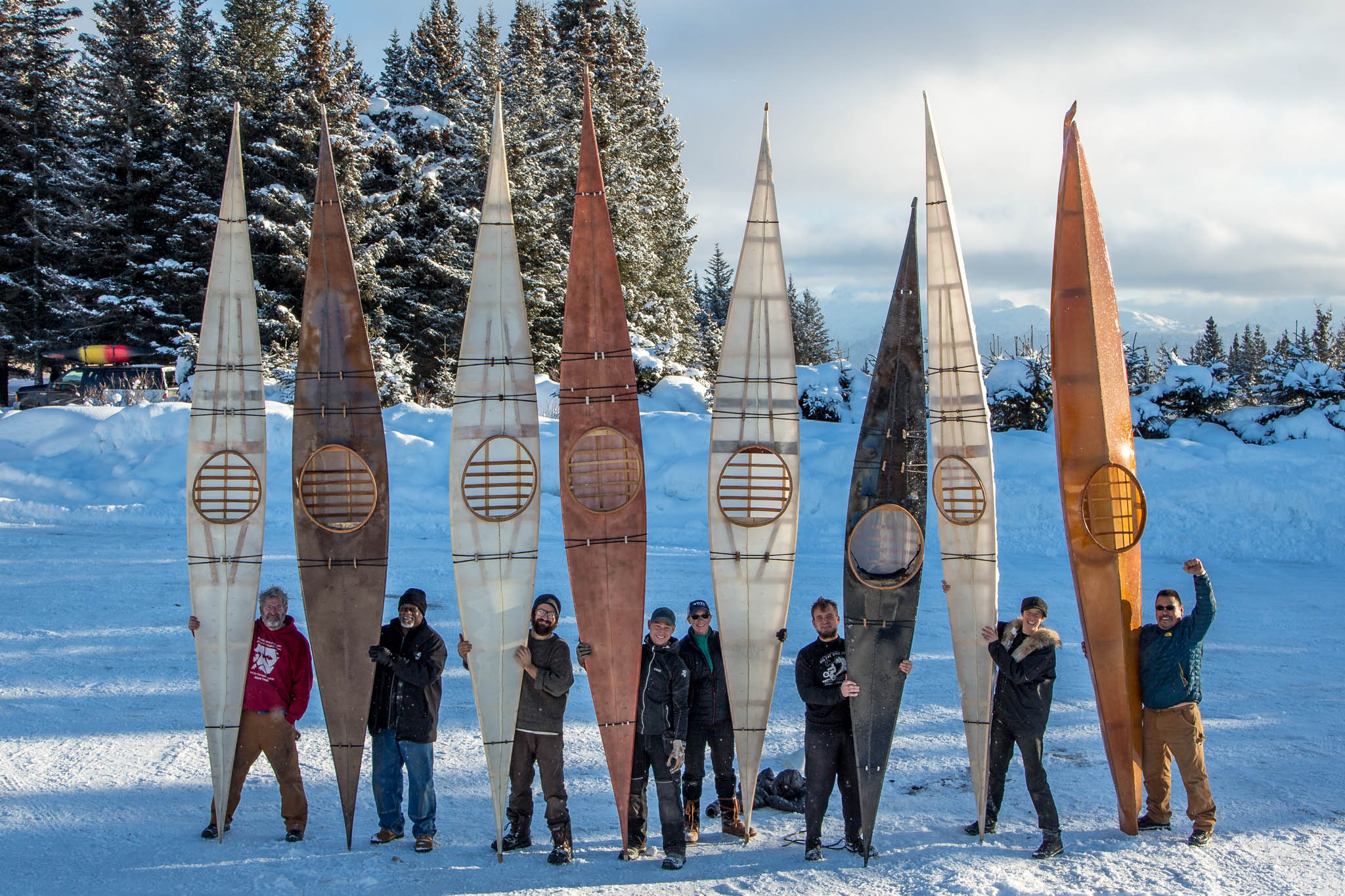
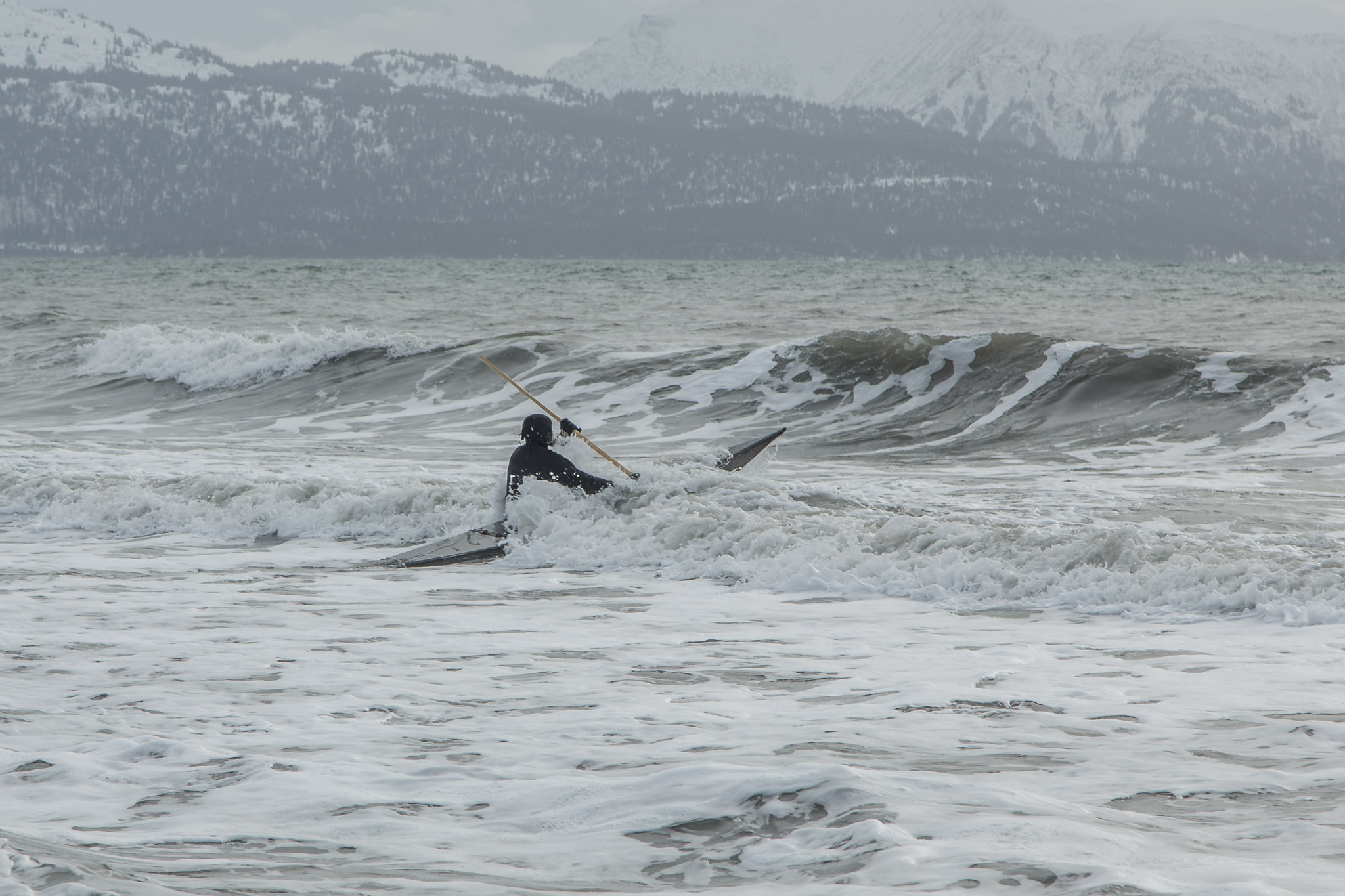
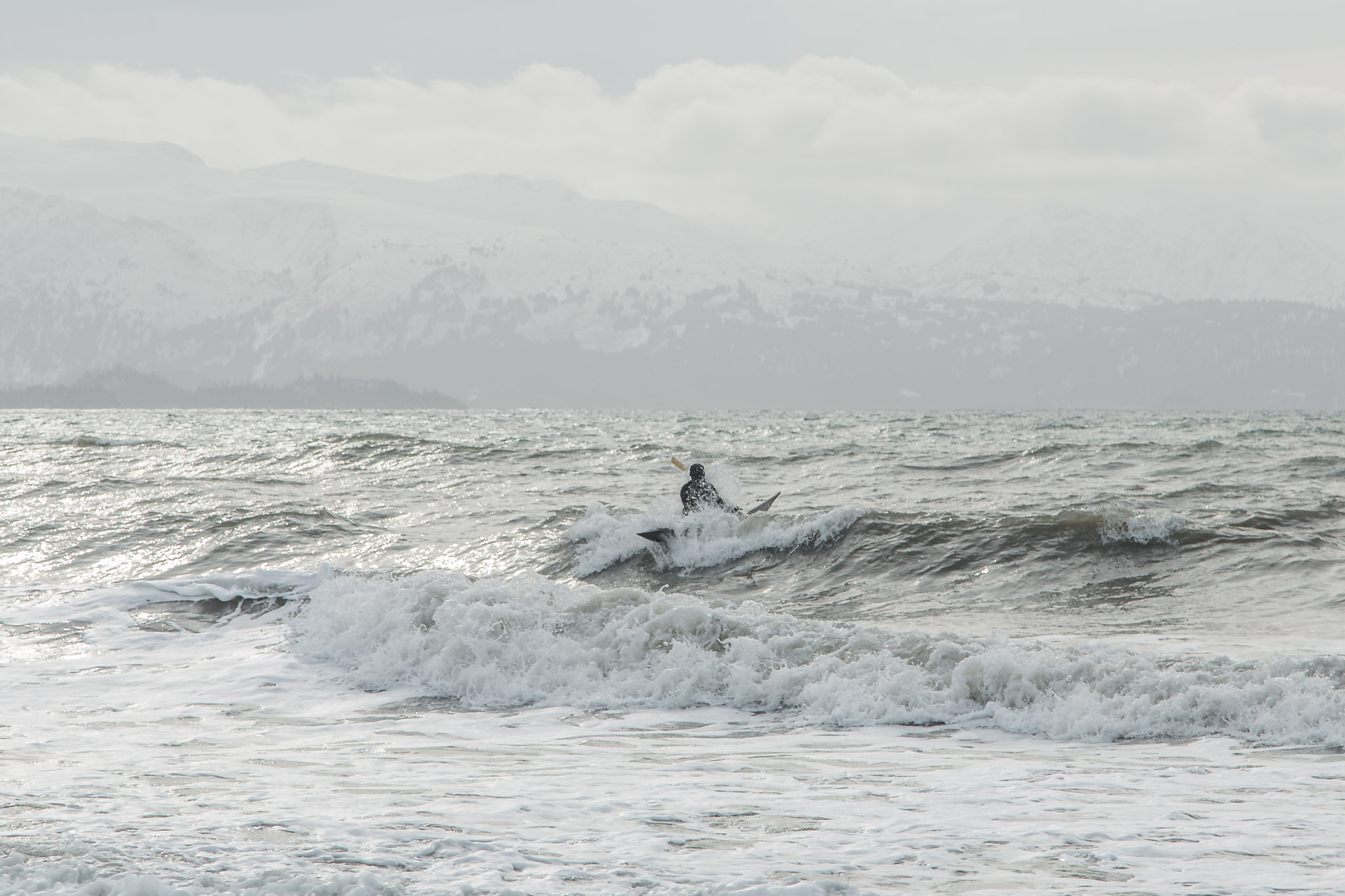
The swift current puled me toward the roaring waves. I widened my knees, locking them into a secure position and rapidly dipped the boat right and left a couple times to acquaint myself with its stability. To properly sea kayak, hips must remain loose. A four-foot wave jacked up in front of me, grew to five feet and crashed. I pulled hard on my paddle and leaned forward; my little dart of a kayak pierced the first wave handsomely. The next one in the set was bigger. As it stood up and took shape, I realized this one was going to clobber me. Weighing my options, I needed to make a decision, and fast.
The legacy of the kayak, throughout the circumpolar north, varies, but, for the most part, skiffs and outboard motors began replacing their use in the early 20th century. One big exception, however, was in Greenland where the art of kayak building and their practical use never fully went out of fashion.
In the 1980s, many Greenlanders worried that the kayak was falling out of use. Qaannat Kattuffiat (Inuit for Kayak’s Club) was founded with the idea to develop traditional kayaking into a sport, which is now the countries’ most popular, followed by soccer. The organization's position is that the physical process of building kayaks and learning the skills of how they are used is communicative of cultural knowledge, which cannot be acquired any other way than practice and personal experience.
In Greenland, children begin learning to kayak at age 6. By their teenage years, they are allowed to compete in summer kayak contests. These competitions consist of races, demonstration of dozens of capsize and recovery rolls, harpoon throwing, rope gymnastics, and other techniques. Every summer, thousands-of-years worth of knowledge, innovation and traditions are celebrated and handed to the next generation. As a result, the flame of the kayak within Greenland was never quenched.
Alaska, however, was not so fortunate. By the 1940s, with the increasing popularity of motorized watercrafts, one generation neglected to pass on the skills and methods of ocean paddling to the next. It is possible to infer how to replicate traditional Alaskan kayaks; it is impossible to know what techniques their practitioners employed on the water.
The most famous contemporary Greenlandic kayaker is 35-year-old Maligiaq Padillia. Maligiaq received his first kayak at a young age from his grandfather—a highly respected hunter. After a rigorous mentorship, Padilla became champion kayak-man of the year, for a record holding, ten times. He has now built over 450 traditional kayaks, and has taught classes the world over. Maligiaq, a torchbearer of the circumpolar Inuit, is celebrated in Greenland and within kayaking circles like a rock star.
Maligiaq’s kayaks hang in The Smithsonian Museum, public buildings, schools, and other institutions, but he is most gratified by kayaks that slip through the water and are put to vigorous use.
Currently a resident of Anchorage, Maligiaq is on a mission to revitalize traditional kayaks and the skills of their use in Alaska. Over the last several years, he has traveled throughout the state, studying and replicating regional designs, building kayaks with school-age youth, and fostering interest in the renewal of recently lost traditional skills.
Last winter, in a 60-foot yurt, heated by a wood stove and pleasant company, seven people, including myself, built traditional kayaks under Maligiaq’s guidance, in Homer, Alaska. Each kayak is made to fit the owner, relying on anthropometry—measurements and proportions of the human body.
In nine days, the kayaks were shaped, lashed, skinned with ballistic nylon and waterproofed.
The wave in front of me advanced and grew frightfully tall. At the last possible second, I intentionally tipped over rather than taking the heavy wave on my head. My lower body remained firmly locked into the boat. Under Maligiaq’s expert care, I had made this craft to fit, perfectly. The wave slammed onto my upturned hull and the turbulence jostled me like an earthquake made for one. When the commotion subsided, I reached my paddle to the surface, made a wide sweep with the blade and rolled back upright. On my face, an uncontainable grin; ready for the next one.
Before the Roman civilization or the pyramids of Egypt, kayaks have been cutting the waters of Alaska. The simple and elegant technology, adroit and at home in the most punishing marine conditions, makes too much sense to not exist. The traditional kayak has reemerged, unwilling to go extinct.

